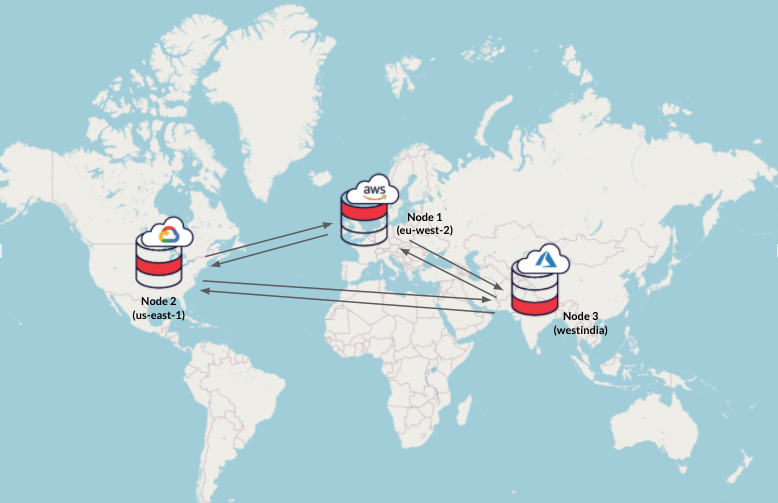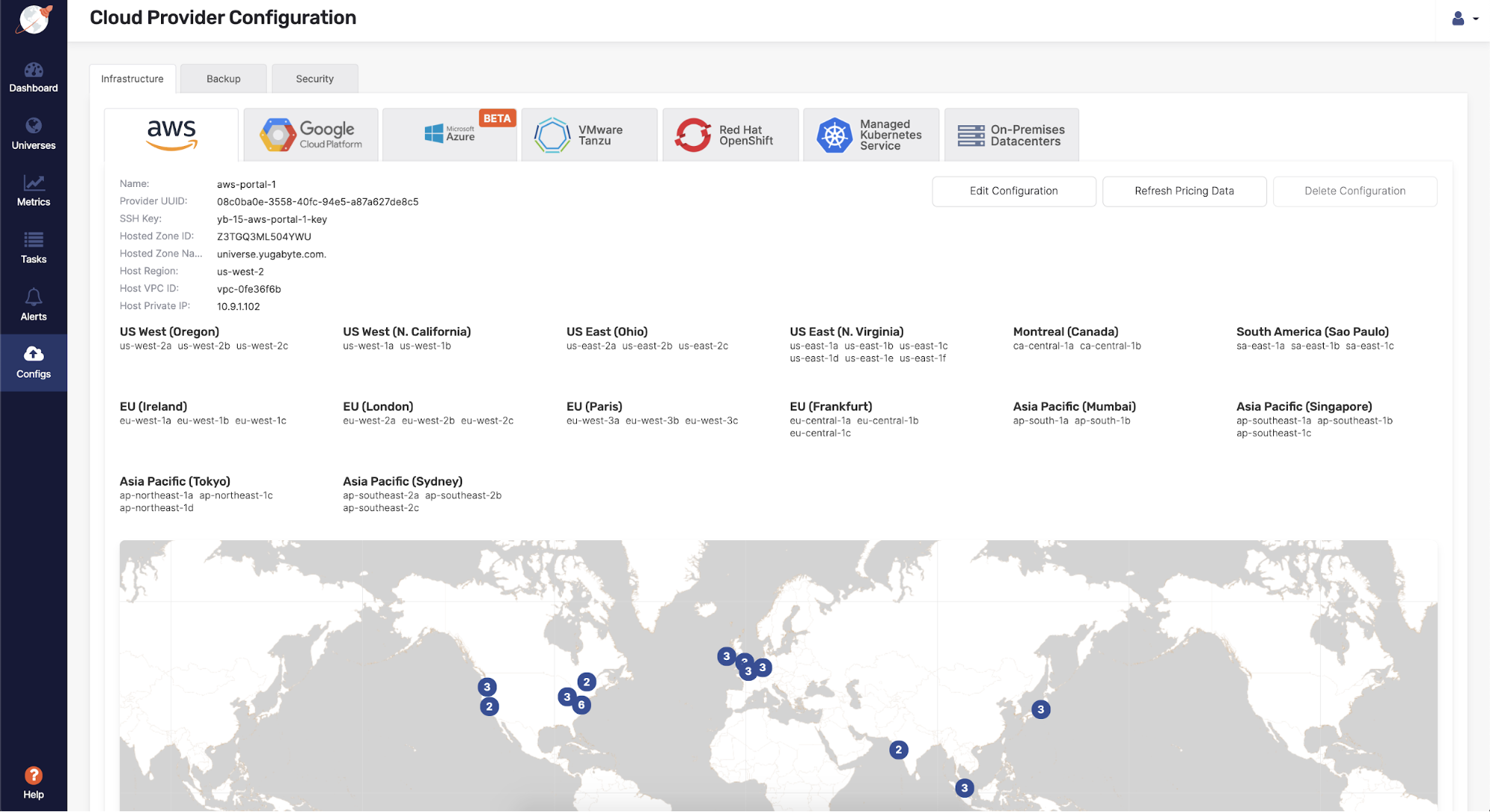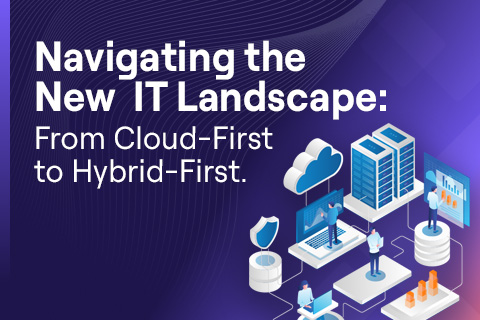A Practical Multi-Cloud Distributed SQL Strategy for 2021
In order to meet the needs of the growing demand of businesses, many global enterprises are choosing cloud infrastructure from multiple providers like AWS, Azure, Google, or private data centers. According to a Gartner survey of public cloud users, 81% of respondents are already using multiple clouds. Leveraging multiple clouds to support data infrastructure provides these benefits:
- Reduced operating and infrastructure costs by avoiding vendor lock-in.
- Improved application resilience and redundancy with geographically distributed data centers. (Cloud providers suffer from outages so putting all your workloads on one provider’s infrastructure increases the risk of an application becoming downtime.)
- Improved customer experience and performance optimization by choosing a data center closest to end users that can serve the requested data with minimum latency.
- Achieving data compliance, such as the EU’s GDPR which requires data to be held in particular geographical locations. (If your primary cloud does not support all the regions where your customers reside, you need to consider a multi-cloud strategy.)
- Ability to expand into new markets by taking advantage of regional data centers.

Companies without a multi-cloud strategy risk missing out on these benefits and falling behind competitively. CTOs are under pressure to accelerate their digital transformation plans to realize a multi-cloud strategy. As companies look at ways to modernize their business to leverage multi-cloud architecture, they face serious challenges, including:
- How to optimize multiple cloud spend and usage.
- How to enforce your organization’s security strategy across different cloud providers.
- How to develop a multi-cloud management tooling strategy for reducing the management overhead.
- How to migrate workloads between clouds and architect highly performant multi-cloud applications.
Considerations for Adopting a Multi-Cloud Approach
Consequently, CTOs ask: “How do you design multi-cloud solutions to ensure that the benefits outweigh the costs?” Below are a few important practices that enterprises should adhere to while defining, implementing, and managing their multi-cloud database infrastructure:
- Choose the right deployment option. Enterprises are increasingly moving to cloud native applications powered by a microservices architecture. And with continued business growth, data will eventually spread across various geographies and cloud providers. There are three common geographic distribution approaches to deploying such applications.
- Multi-zone – application is distributed across multiple availability zones in a single region for automatic tolerance to zone failures. Region-level fault tolerance requires a two-region deployment with a separate follower cluster in a second region.
- Multi-region – application is distributed across multiple regions of a single cloud for automatic tolerance to region failures, low latency reads for local users and compliance with data governance regulations such as GDPR.
- Multi-cloud – application is distributed across multiple clouds for automatic tolerance to cloud failures as well as to support hybrid cloud deployments (involving on-premises data centers).
- Select a cross region data distribution strategy. Distributed SQL databases provide a variety of cross region techniques for data distribution: default replication, 2DC replication, geo-partitioning, and read-only replicas. These techniques are certainly hard to implement from a distributed systems engineering standpoint but nevertheless are necessary for geo-distributed SQL to power highly scalable, latency-sensitive relational apps. Evaluate your primary business objectives: replication, data residency, consistency, write latency, read latency, schema changes, and recovery point objective (RPO) to choose the right strategy.
- Redefine your DR strategy to cater to cloud outages. Cloud service providers will typically have an SLA where a specified level of service continuity is promised to their customers. However, uninterrupted service is not always possible. Selecting a cloud service provider that can provide a sufficient service redundancy level is critical, but it still won’t guarantee 100% uptime. The databases will need to provide fault tolerance and high resilience to such outages.
- Prioritize security, data regulatory, and compliance policies. One of the friction points for all enterprises, and particularly in sensitive and regulated industries, has been around data loss, theft, and privacy breaches. This concern is magnified with a diverse set of IT resources in use. Choose a database that provides modern enterprise security controls for authentication and authorization, encryption of data in-flight and at rest, and data auditing.
- Make full use of the elasticity of the cloud. Databases need to be prepared for Black Friday and Cyber Monday. Quickly expand to meet your business’s changing demands by automatically handling replicas, backups, sharding, and transactions in a single region or globally. Select a database that can dynamically scale (both vertically and horizontally) while keeping latencies at a minimum to deliver maximum benefits.
- Enable cloud migration and data portability. A multi-cloud database is prudent and must include the ability to migrate data and workloads to the cloud of choice, as well as across and within zones and regions. By selecting a cloud agnostic database you will be able to avoid vendor lock-in and architect applications that can be easily migrated without any costly re-architecture.
- Centralize database tooling and governance. Enterprises need to choose a platform that abstracts cloud complexities and simplifies multi-cloud operations. Having a single pane of glass that can provision/de-provision database nodes across clouds, auto-scale (new VMs), orchestrate services, monitor traffic and manage data backups will accelerate the journey.
- Invest in DevOps and CI/CD tooling. Organizations that are driving a new multi-cloud strategy need to invest in automation tooling to reduce shadow IT and software TCO. Database deployment should be part of your DevOps & CI/CD tooling so it can be reliably deployed to private, public, and hybrid clouds.
The “Executing a multi-cloud data infrastructure data strategy” whitepaper provides a deep dive on how to carefully plan, architect, and execute a successful future-proofed multi-cloud data strategy. Specifically, this paper answers:
- What is multi-cloud?
- What are the benefits of adopting a multi-cloud strategy as it relates to data infrastructure?
- Which multi-cloud architecture will best satisfy my business needs and technical requirements?
- What challenges do database vendors need to overcome before claiming multi-cloud capabilities?
- How can adopting YugabyteDB enable my data infrastructure to support a multi-cloud strategy?
- What companies are succeeding with multi-cloud data infrastructure?
Multi-Cloud Data Management Made Easy
One of the core pillars of YugabyteDB is to give organizations the freedom to run their data infrastructure anywhere, avoiding being locked-in to any specific cloud provider. YugabyteDB’s cloud native architecture has enabled hundreds of enterprises to deploy on the clouds of their choice. With YugabyteDB you can seamlessly manage your distributed databases across Google Cloud (GCP), Amazon Web Services (AWS), Microsoft Azure, VMware Tanzu, Red Hat, and on-premises data centers.

Cloud Provider Configuration in Yugabyte Platform, a management platform for building your private DBaaS
Learn More About Multi-Cloud with YugabyteDB
No matter where your organization is on your multi-cloud journey, our database solution abstracts away the most challenging roadblocks to unlocking your multi-cloud strategy. If you want to try out a robust, highly available database without any upfront infrastructure investment and straightforward and easy-to-use APIs for SQL and NoSQL workloads, you can certainly have a closer look at YugabyteDB.
- Download the whitepaper: Executing a multi-cloud data infrastructure data strategy
- Schedule your demo here: https://www.yugabyte.com/contact-us/
- Attend the annual Distributed SQL Summit. You will hear from cloud practitioners and specialists about successfully managing multi-cloud deployments.


